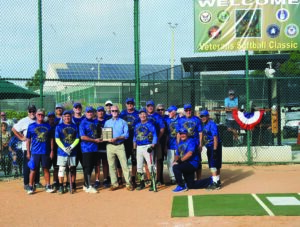Where does an astronaut dock his spacecraft? At a parking meteor.
Sunday, Nov. 2, is the 25th anniversary of the International Space Station. Its construction was a joint venture of the United States, Canada, Japan, and Europe. More than 280 astronauts from various countries have been stationed there. The International Space Station orbits the Earth 16 times a day at an average speed of 17,500 miles per hour. Its trajectory passes over more than 90% of the Earth’s population.
The free Spot the Station app, available only on mobile devices, is the official NASA app that helps users track the station and receive notifications for viewing the station as it passes overhead. The International Space Station is visible because it reflects sunlight, and the best times to view it are at dawn and dusk.
We have the Leonid meteor shower to look forward to in November. The Leonids are associated with Comet 55P/Tempel-Tuttle, and are active Thursday, Nov. 6, through Sunday, Nov. 30, with the peak on Monday, Nov. 17. The peak should be good viewing because of a crescent moon. Look southeast to see the shower radiating from the Leo constellation. Early morning, before sunrise, is the best time to view.
At our club meeting in October, Larry Isenberg gave a light-hearted Sun Segment presentation by playing the Beatles’ song “Here Comes the Sun” on a ukulele. He also pointed out how many words have “sun” in them, including sunlight, sunbelt, sunrise, sunset, sunburn, and sunflower.
Cammie Fairburn shared photos from her recent trip to the Grand Canyon, where the night sky is very dark. Seeing so many stars and the Milky Way was amazing, as was the private telescope viewing at the Lowell Observatory.
Doug George introduced us to The Sky Live app, which displays the current positions of the planets in our solar system in three dimensions, the current moon phase, the positions of other planetary moons, and current comet, asteroid, and meteor shower activity. This app is available for free for both computers and mobile devices.
Regular meetings of the Moonstruck Astronomy Club are on the first Thursday of every month from 11:15 a.m. to 12:45 p.m. in the Hobby Building Event Room. All residents with a valid resident ID or Gateway of Services pass can join the club, and new members are welcome! Club dues are only $20 per year, and they include a subscription to the quarterly Reflector Magazine.
For information or club registration, please contact club President Jim Di Paolo at moonastroclub@gmail.com. More information is always available at moonstruckastronomyclub.org.
Keep looking up.


